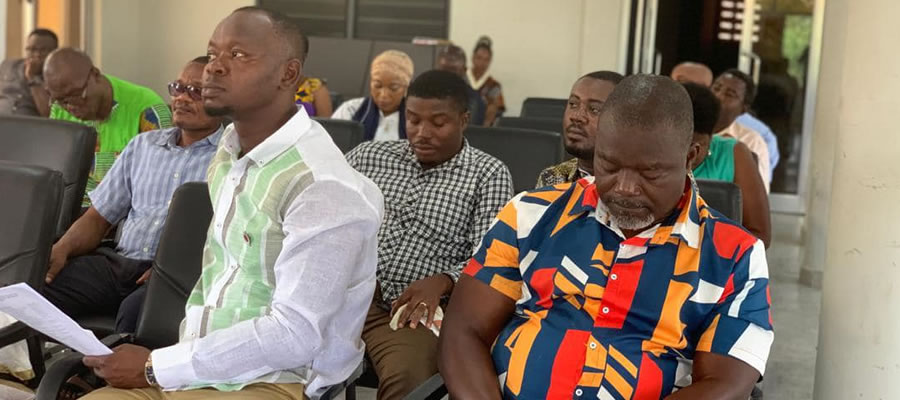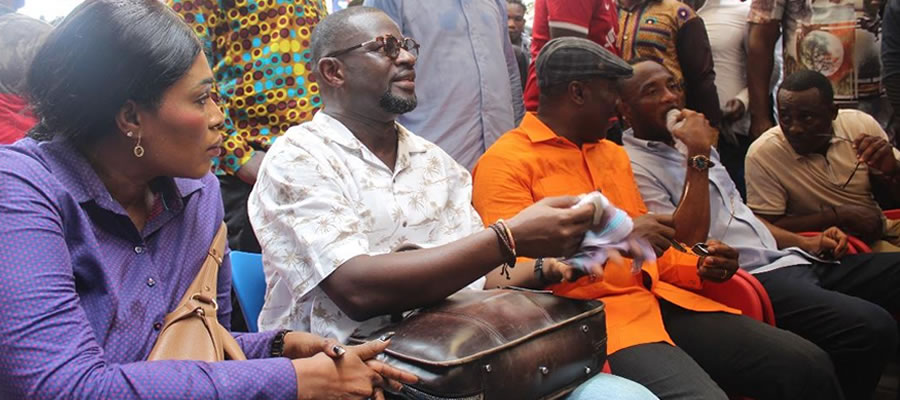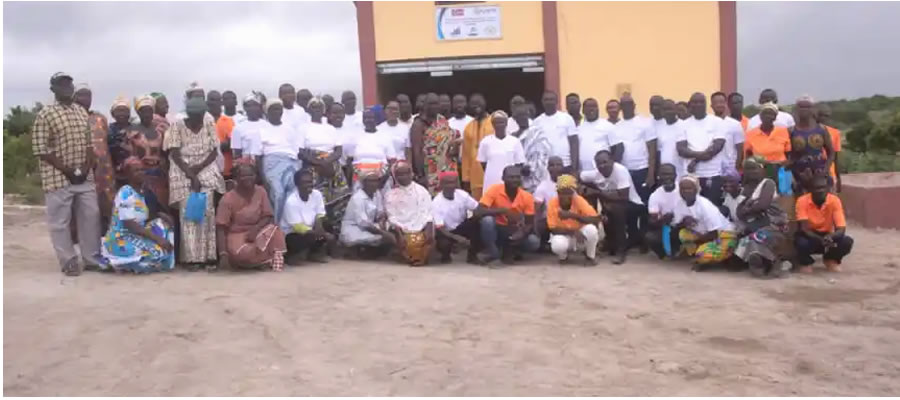

Social Protection For The Vulnerable
Over the past few decades, there has been an international and national consensus on the recognition of the rights of vulnerable segment of the society with emphasis on the promotion of their dignity and inclusive development. Information and data on the type and locations of vulnerability inform decision-makers to formulate policies and programmes to address specific barriers that prevent the vulnerable segment of the population to participate effectively in national development.
The Municipal Assembly is therefore committed to the wellbeing of the vulnerable segment of the population in the Municipality. In its efforts to alleviate the economic hardships of the vulnerable segment of the population in the Municipality, different policy interventions are designed to address the following vulnerability categories:
1. People Living With Disabilities (PWDs)
2. Women
3. Child trafficking
4. Child neglect
5. School drop-outs
6. High illiteracy
7. Poverty
8. HIV/AIDs
Persons With Disability In The Municipality
Persons with disability (PWD) have been defined as ‘‘those who are unable to or are restricted in the performance of specific tasks/activities due to loss of function of some part of the body as a result of impairment or malformation’’ (Ghana Statistical Service, 2012). As shown in Table 3.1 about 1,828 representing 3.7 percent of the population in the Municipality has some form of disability.
The proportion of PWDs is higher among females (2.8%) than their male counterparts (2.5%). The proportion of females with sight disability is 46.5 percent as compared with 35.9 percent of males in the same PWDs category. Similarly, there are more males (33.4%) with physical disability than females in the Municipality.
Type Of Disability In The Municipality
The proportions of PWDs by type of disability are shown in Fig 3.1.The most common type of disability in the Municipality is the visually impaired. The proportion of PWDs with sight or visual impairment is 41.8 percent while the second most common type of disability is the physically disabled recording 31.9 percent; with the least proportion of 11.2 percent of persons having other forms of disabilities in the Municipality.
Distribution Of Disability By Type Of Locality
Table 3.1 further shows that the distribution of PWDs by locality i.e Urban and Rural. The proportion of persons with disabilities is higher in the urban areas (2.5%) than in the urban areas (0.2%) in the Municipality. This is in contrast with the general national pattern where a higher proportion of PWDs lived in the rural areas than the urban areas for all Regions except Greater Accra and Ashanti Region ( 2010 PHC).
The high proportion of PWDs in the urban area (Winneba) in the Municipality could be due the urban character of the Municipality and the existences of specialized education for PWDs (Special Education Department in the University of Education, Winneba, Unipra basic school and DOBOSCO school).
Disability And Activity
Among the economically active persons with disabilities, 1.6 percent of persons with sight disability are unemployed and 1.3 percent is employed. The proportion of persons with sight disability who are economically not active constitutes 1.8 percent. Of the persons with physical disability, 1.5 percent are not economically active and 1.4 percent constitute the economically active population in the same category of PWDs in the Municipality.
One percent of the hearing impaired category of the PWDs is economically active as compared with 0.8 percent of the same category not economically active. The proportion of persons with disability who have some form of disability and are economically active constitute the least (0.5%) of all the disability types.
Disability, Education And Literacy
The proportion of PWDs who had ever attended school constituted 63.1 percent whilst 36.9 percent have never attended school in the Municipality. The high level of school attendance among PWDs in the Municipality could be as a result of the existence of Specialized Institutions for PWDs in the educational institutions such as the department of Special Education at the University of Education; Winneba, the University Practice basic school and Donbosco Catholic School.
The proportion of PWDs who attended primary and JSS/JHS constituted 40.4 percent, 12.8 percent attended post secondary and tertiary education whilst 5.2 percent had secondary and vocational/Tertiary education respectively.The female population with PWDs constitutes 56.7 percent whilst the males of the same category constitute 44.3 percent. The proportion of male PWDs who had ever attended school is 32.5 percent. Among the various types of disabilities, 59.1 percent of persons with sight impairments had basic (Primary, JSS/JHS and middle school) education, followed by the physical and speech disabilities with 49.9 percent and 29.8 percent respectively.
The proportion of persons with emotional and other forms of disabilities who had never attended school constituted 9.5 percent of which 3.9 percent; which form the lowest, are those with other forms of disability who had never attended school. Among the disability category, sight impaired with, 5.6 percent had attained post secondary and above, followed by the physically impaired of 3.8 percent. The emotional disability category who attained post secondary and above was 0.8 percent which is the lowest of PWDs categories who attained post secondary and above in the Municipality.
HIV/AIDS
Objectives of the Municipal HIV/AIDs Control Plan
1. Prevent and control the spread of communicable and non-communicable disease and promote healthy lifestyle
2. Ensure reduction of the impact of HIV and AIDs related morbidity and mortality
3. Improve accessibility and use of existing database for policy formulation, analysis and decision-making
4. To promote, protect and respect the right of people living with HIV/AIDS
5. To provide adequate support for management and coordination
6. To strengthen the capacity of project staff to manage the control of HIV/AIDS
7. To monitor NGOs and CBOs to ensure timely submission of reports
Policy Implications/Issues
1. There are more visually impaired (42%) in the disability category in the Municipality
2. In all the disability categories 32% are physically disabled
3. Three percent (3%) of the disabled persons are located in Winneba
4. Two percent (2%) of PWDs with sight impairments are unemployed
5. PWDs who have no education constitute 37% in the Municipality
6. The proportion of PWDs who attended basic education constitutes 40% whilst 13% attended post secondary
7. The proportion of with sight impairments who had basic education constitutes 59%
8. The proportion of PWDs is 57% in the Municipality
9. High incidence of HIV/AIDS in the Municipality
Policy Interventions
1. Provide disability friendly facilities at all public and private buildings to facilitate movement of PWDs in the Municipality.
2. Provide financial support for PWDs to enable them to be economically active.
3. Provide teaching and learning aids for public basic specialized institutions.
4. Encourage parents to enroll children with disabilities in schools
5. Provide scholarships for students with disabilities in all levels of higher learning.
6. Policy, Advocacy and Enabling Environment.
7. Co-ordination and management of Decentralized Response.
8. Prevention and Behavioural Change Communication
9. Prevent the incidence of HIV/AIDs
10. Ensure adequate availability of HIV/AIDs medications/treatment.
Date Created : 11/17/2017 1:48:23 AM












 facebook
facebook
 twitter
twitter
 Youtube
Youtube
 +233 593 831 280
+233 593 831 280 0800 430 430
0800 430 430 GPS: GE-231-4383
GPS: GE-231-4383 info@ghanadistricts.com
info@ghanadistricts.com Box GP1044, Accra, Ghana
Box GP1044, Accra, Ghana